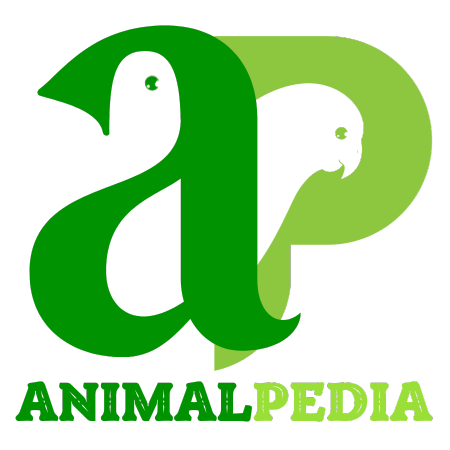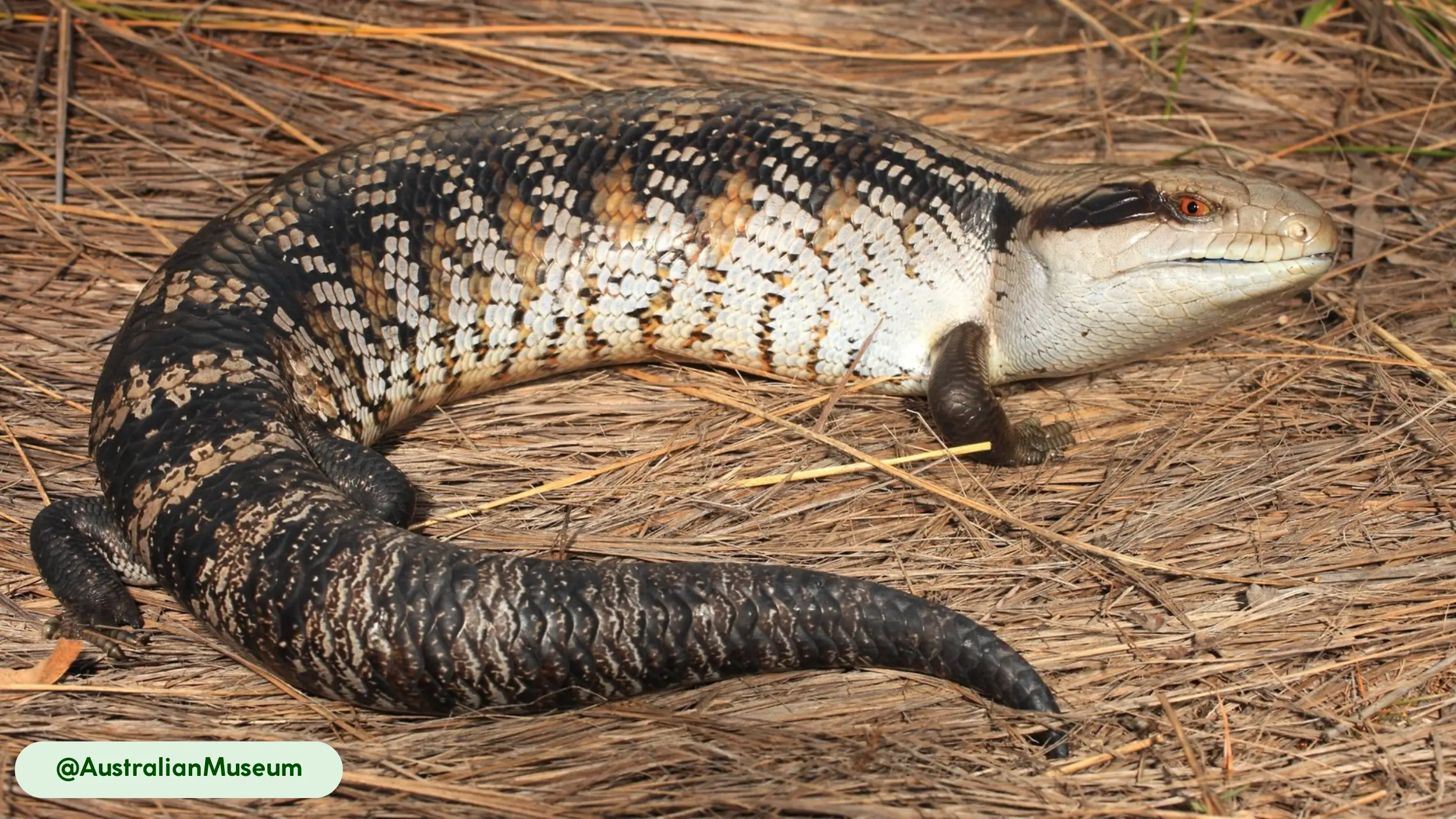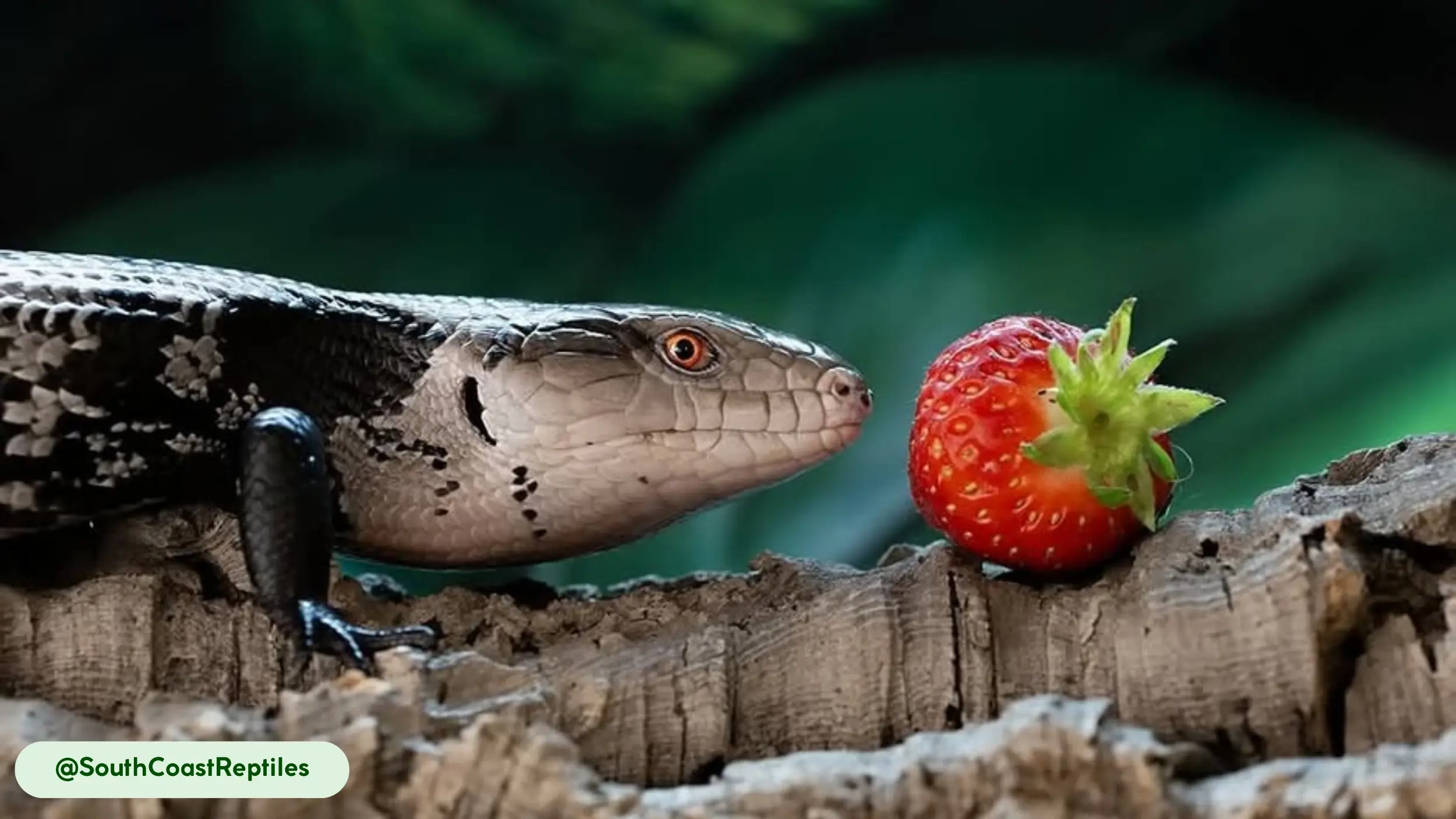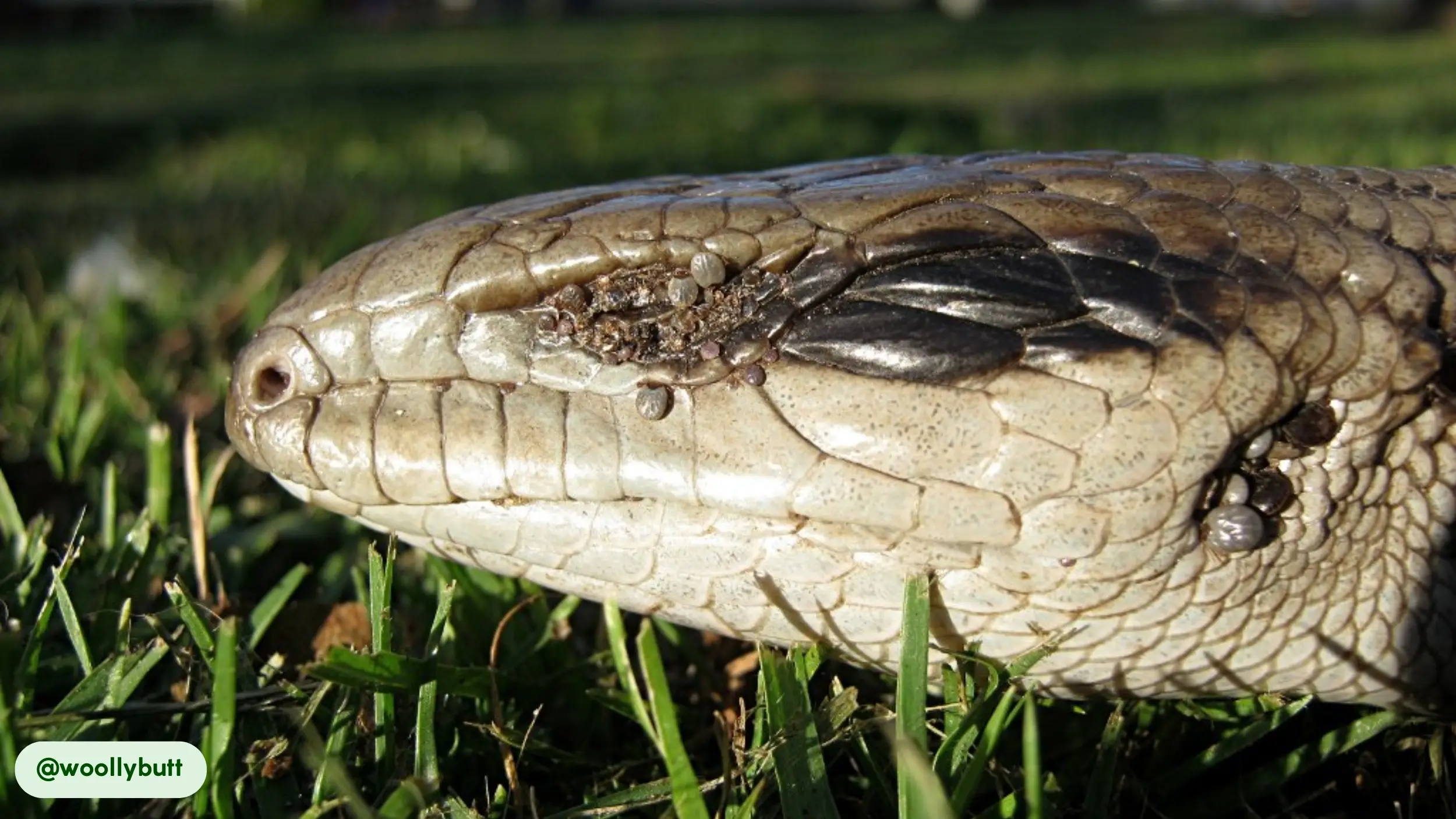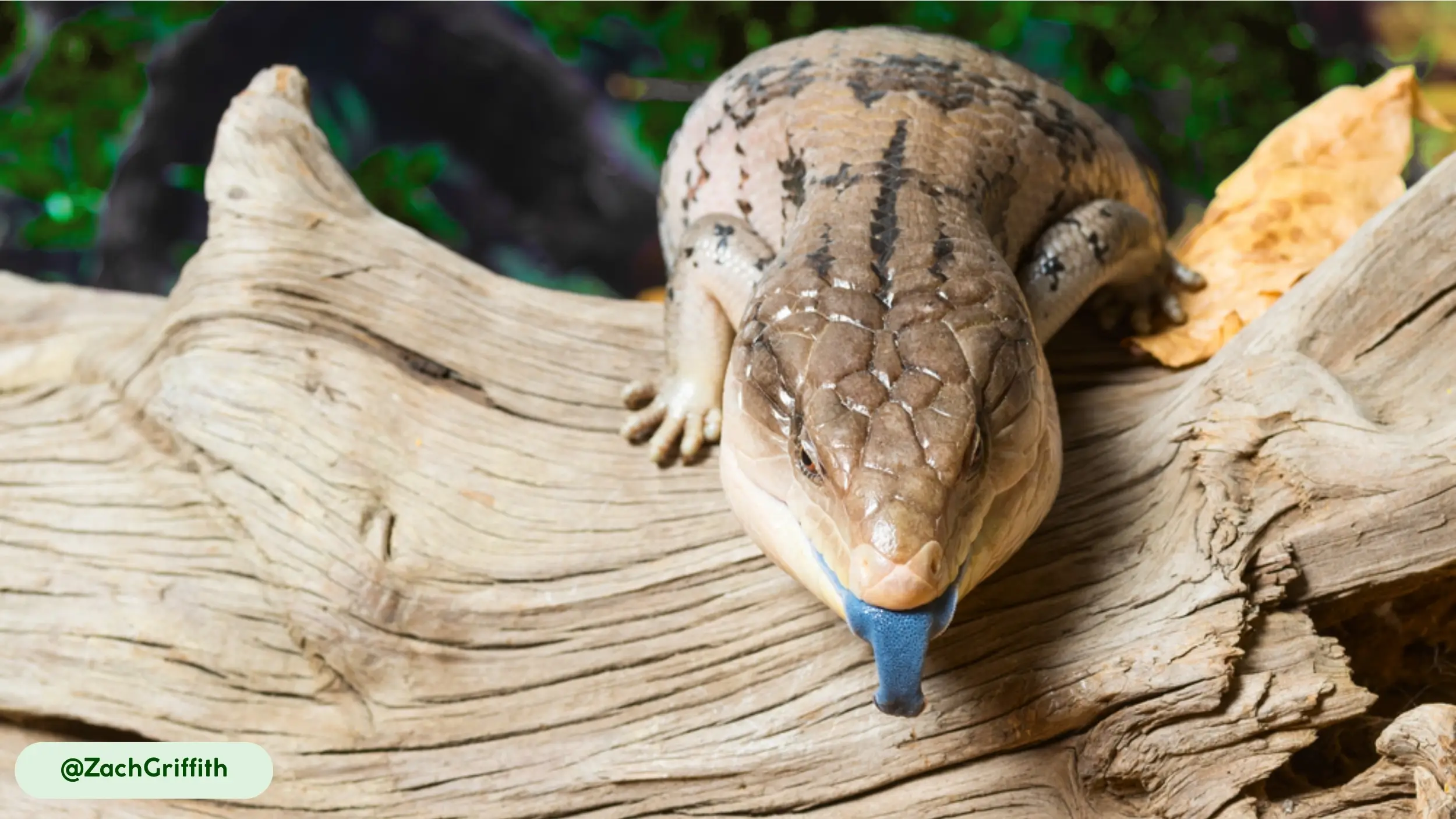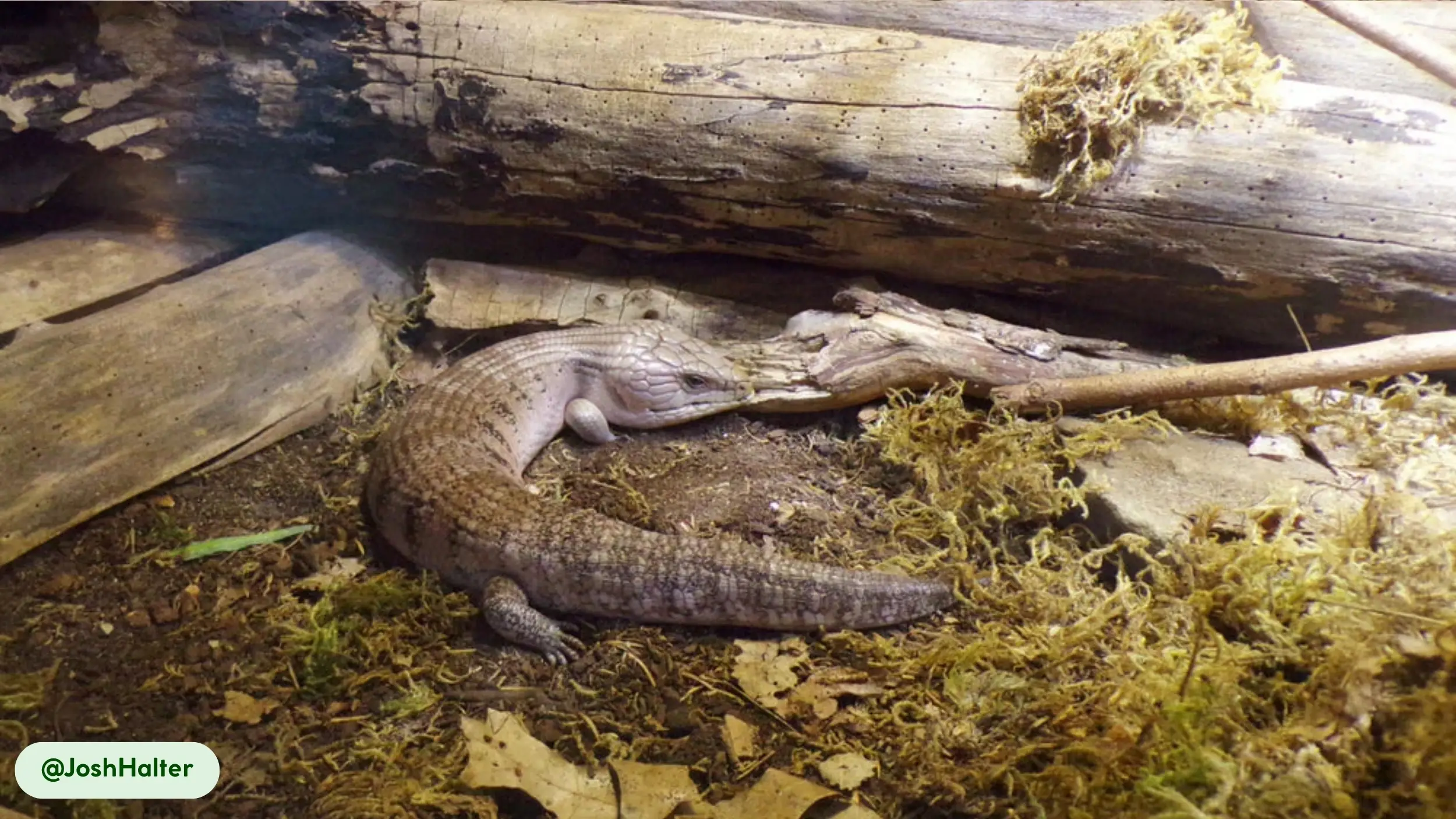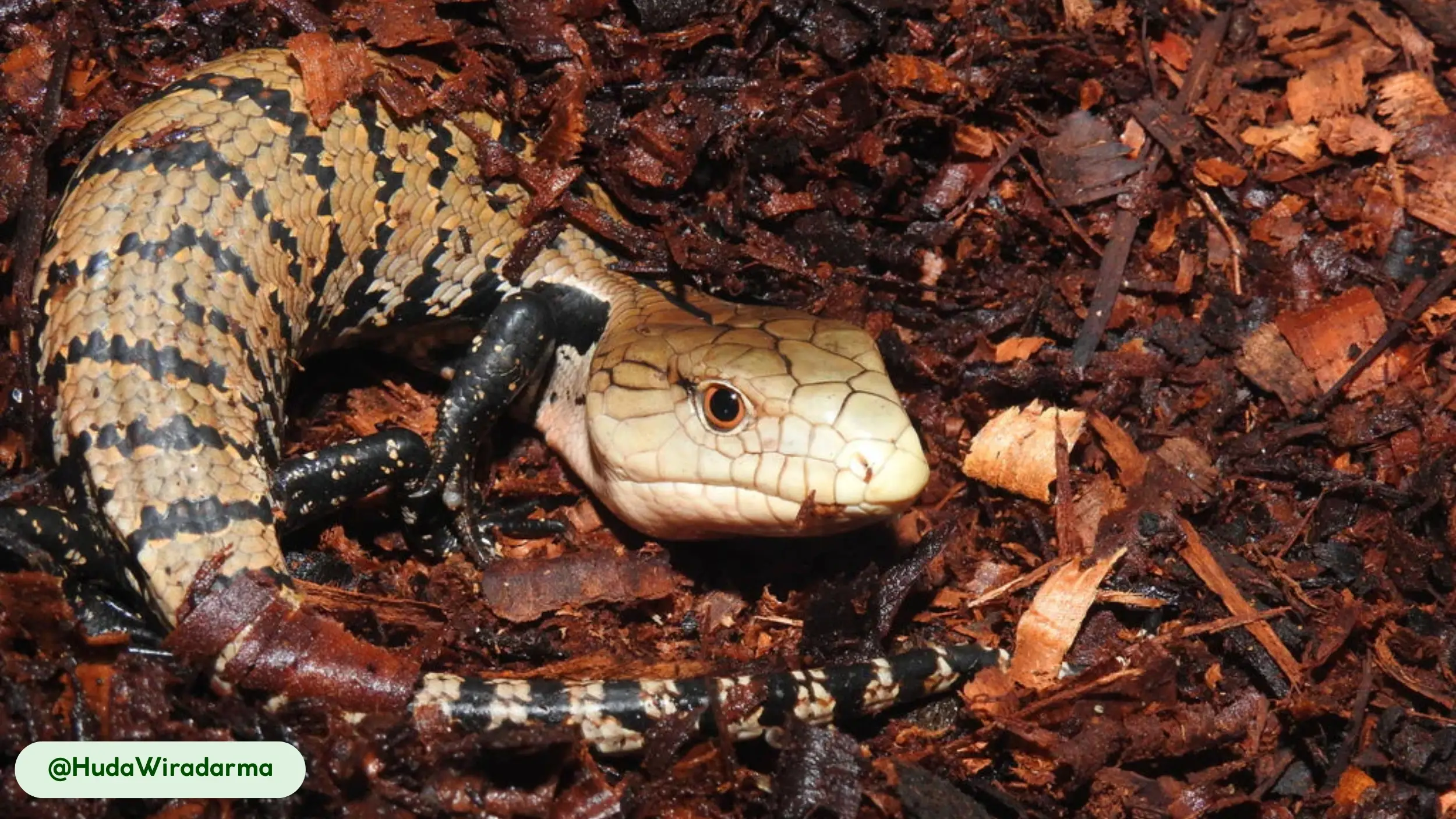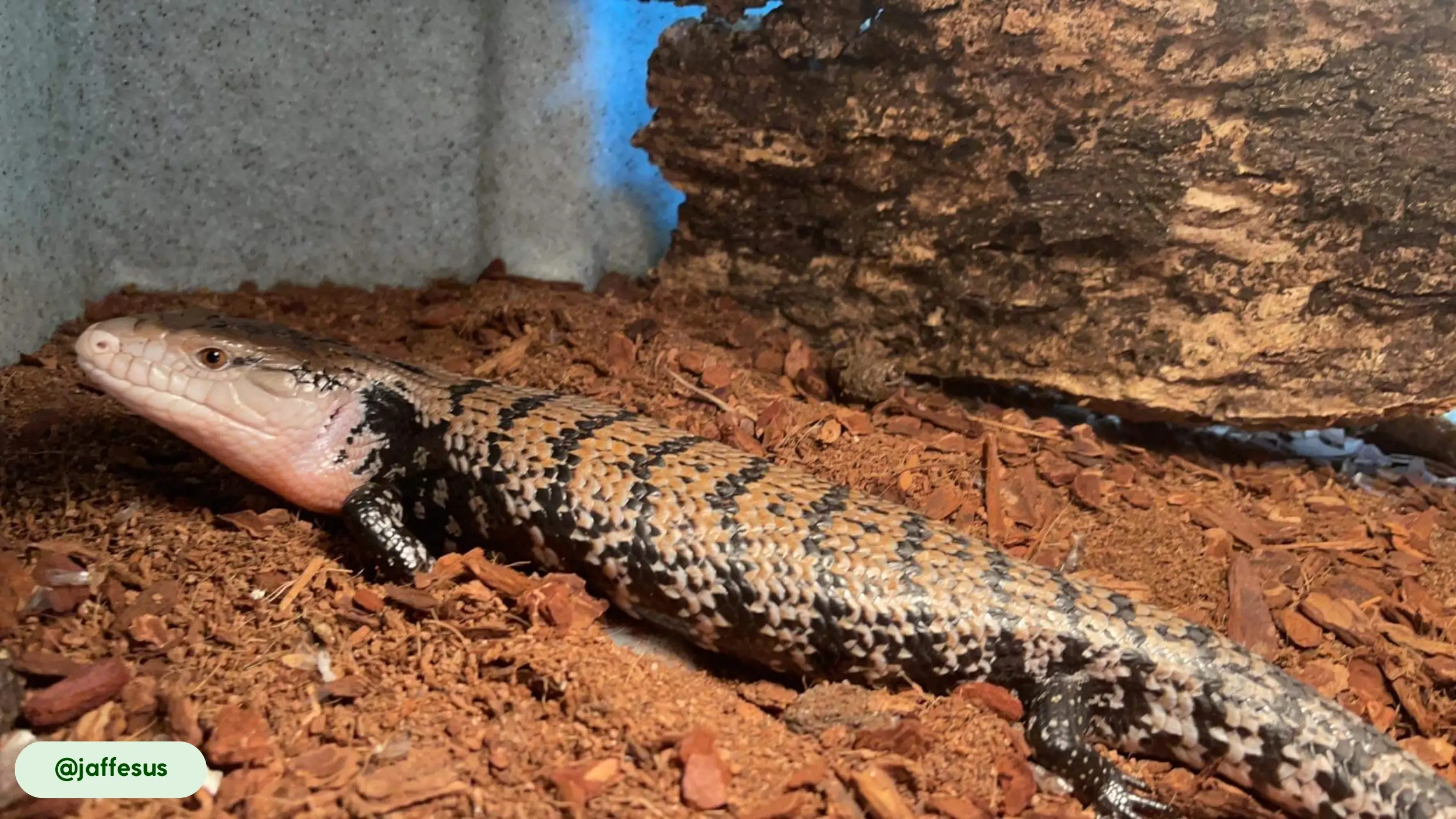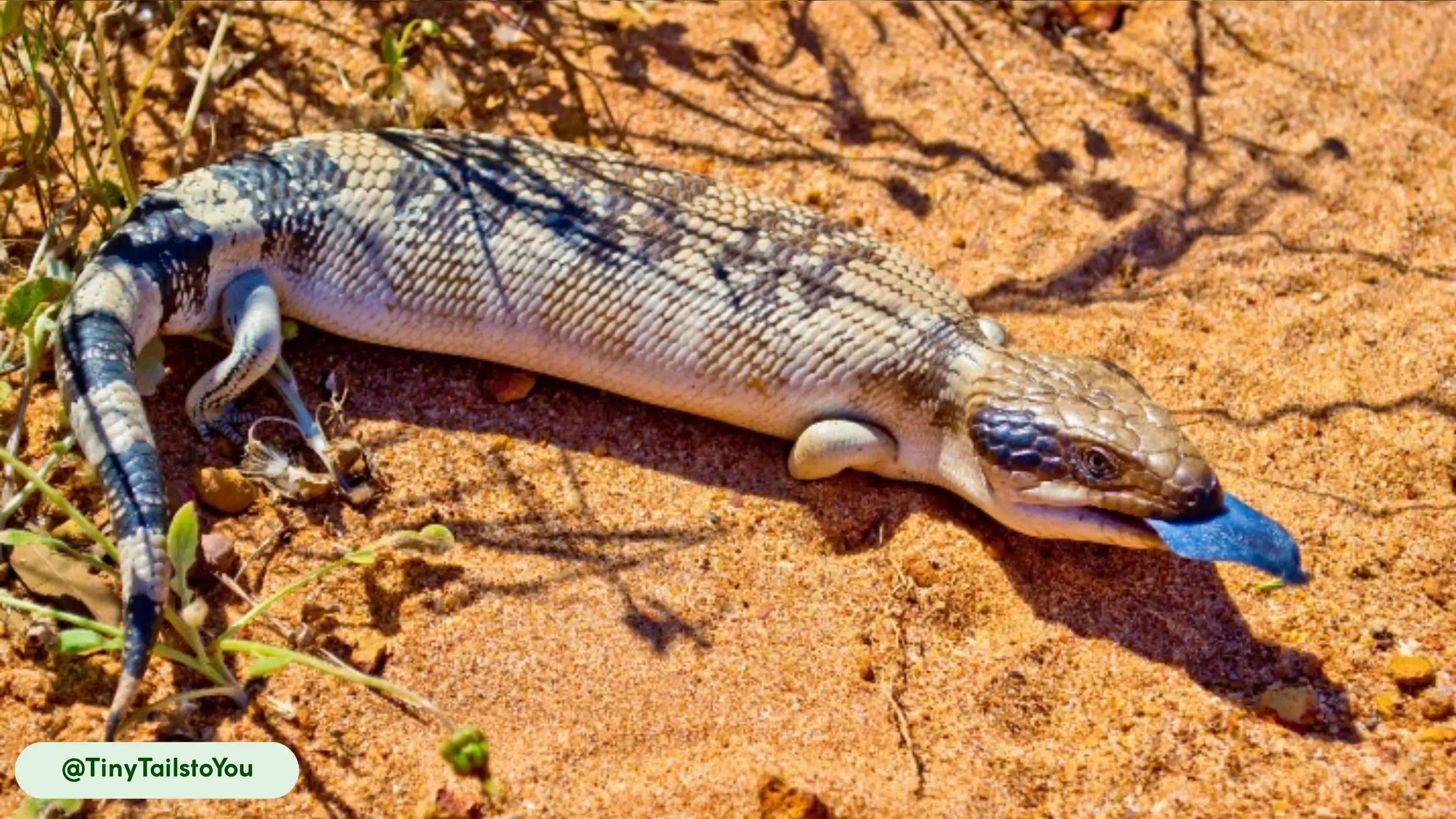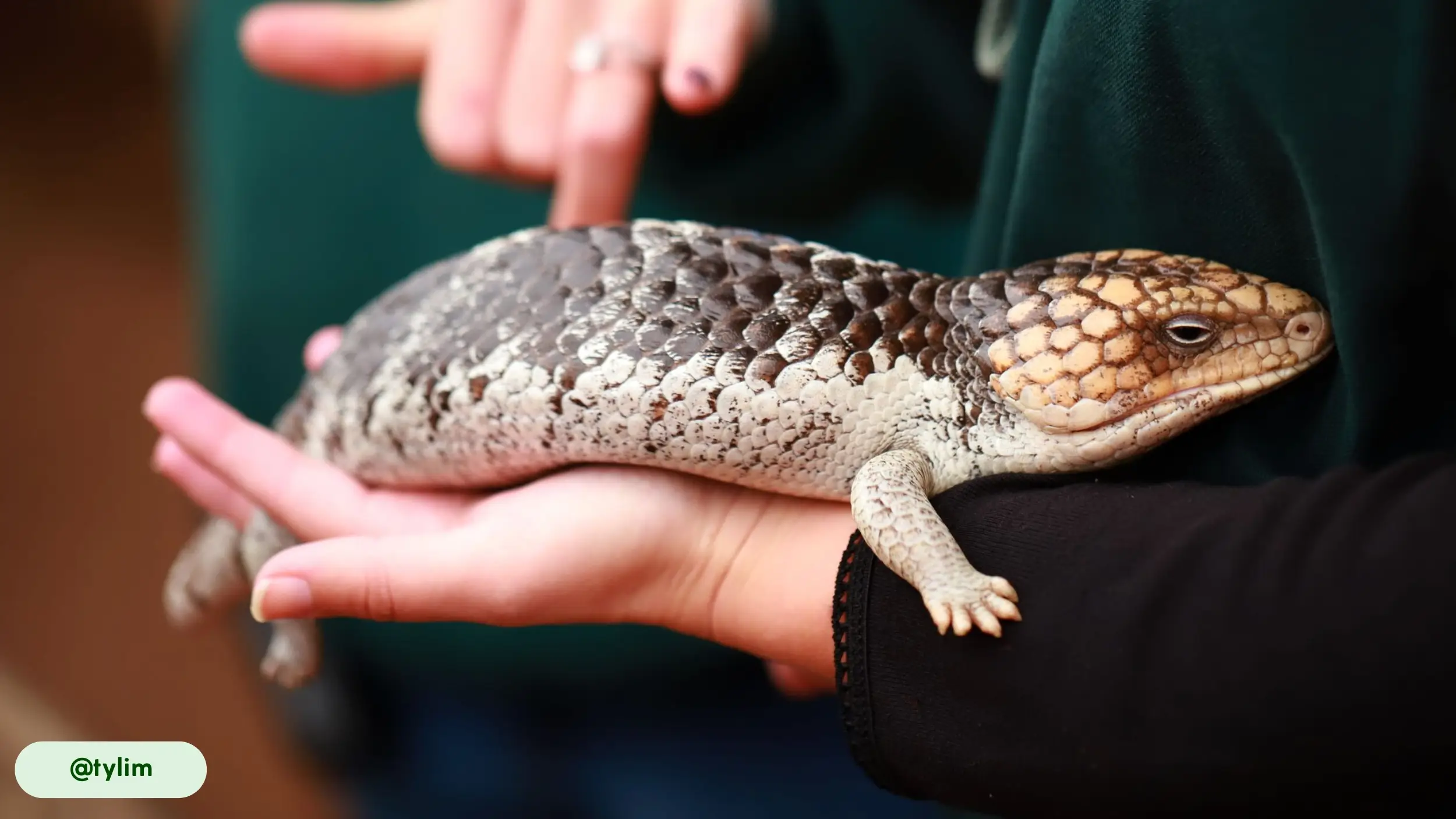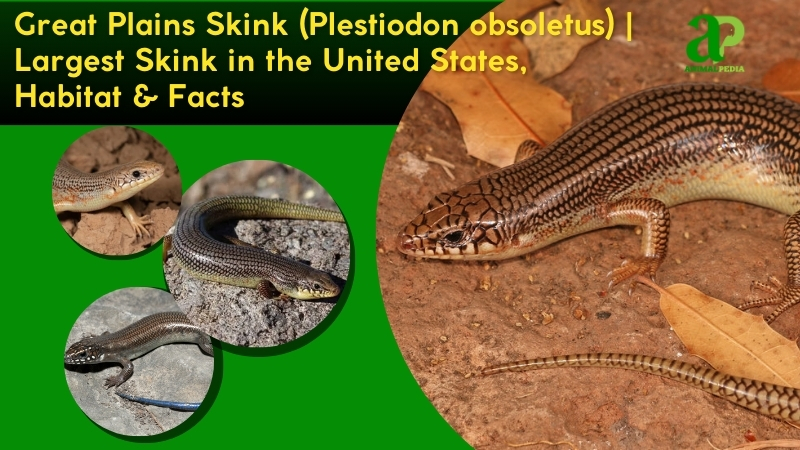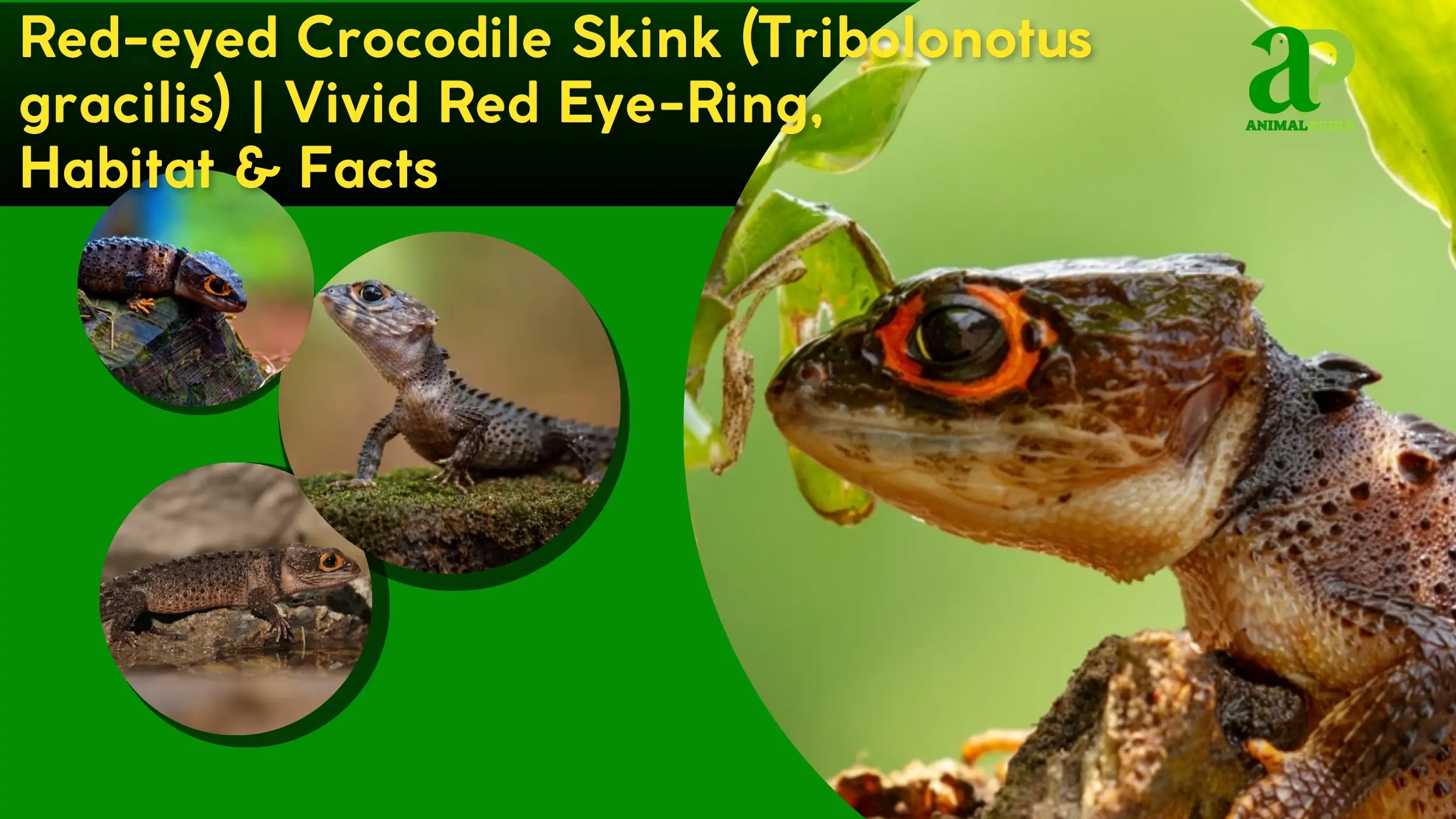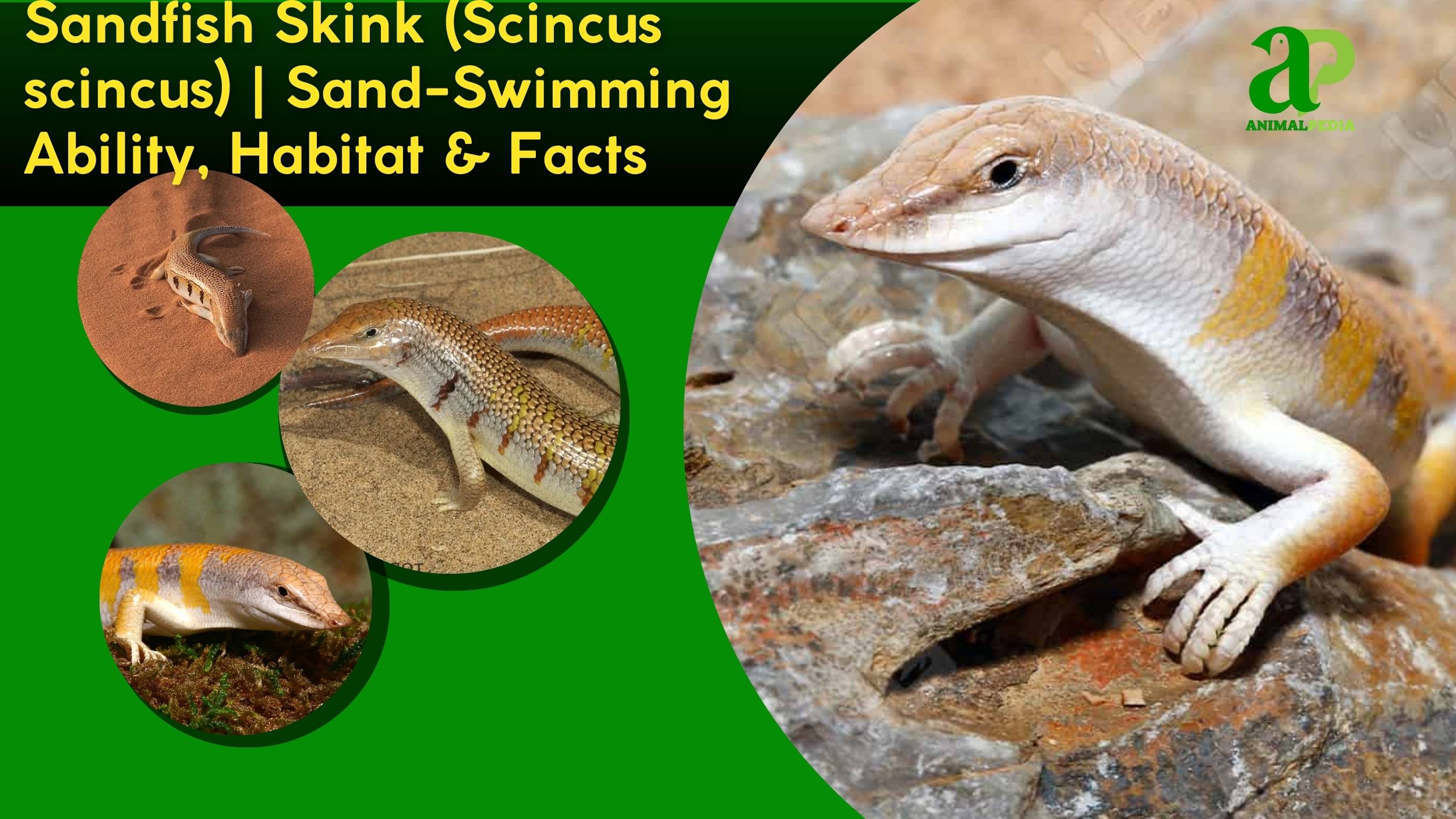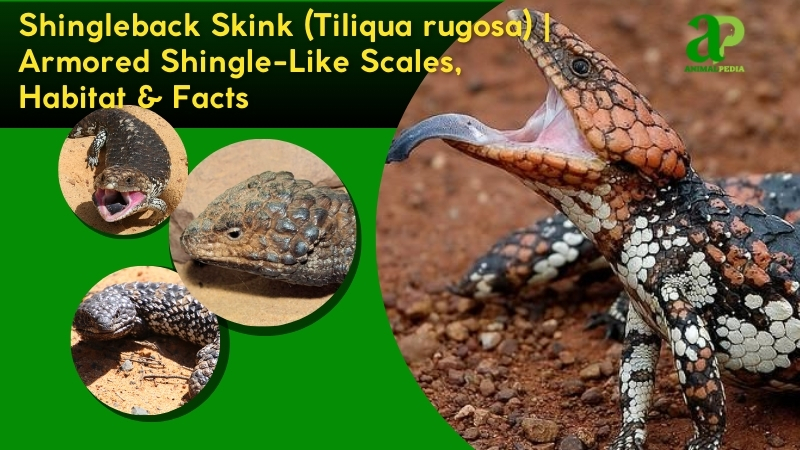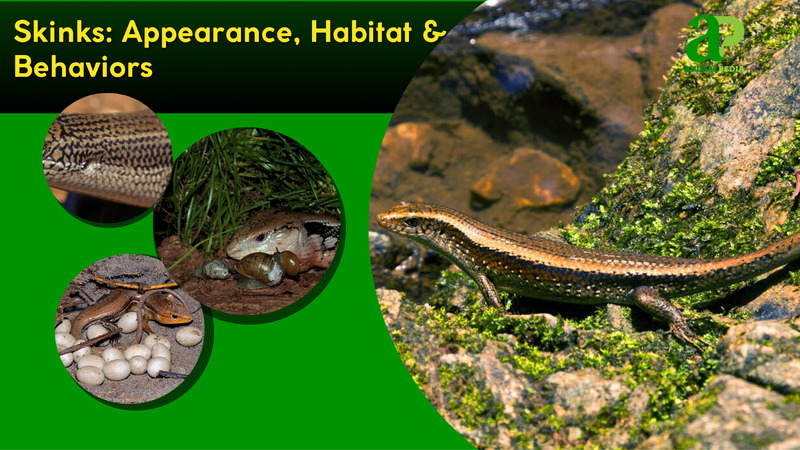The Blotched blue-tongued skink, Tiliqua nigrolutea, is a large, terrestrial reptile native to southern Australia, distinguished by its robust body and its startling blue tongue defense. As a member of the skink family Scincidae, this species is a prominent figure in its native temperate woodlands and grasslands. Adults typically measure around 18 inches (45 cm) in total length and weigh about 1.3 pounds (600 g). They are classified as omnivores, consuming a varied diet of plants and invertebrates, and are primarily slow-moving terrestrial walkers. This diurnal species maintains a stable population, holding a Least Concern conservation status. This comprehensive guide will cover the animal’s classification, unique behaviors, physical features, and ecological role, offering a deeper appreciation of this fascinating reptile.
From a zoological perspective, the Tiliqua nigrolutea exemplifies a common skink type. These creatures are not only integral to their ecosystems but also popular in the global pet trade, which raises questions about conservation and ethical breeding. To truly appreciate this intriguing species, we will now establish its identity and place in the natural world.
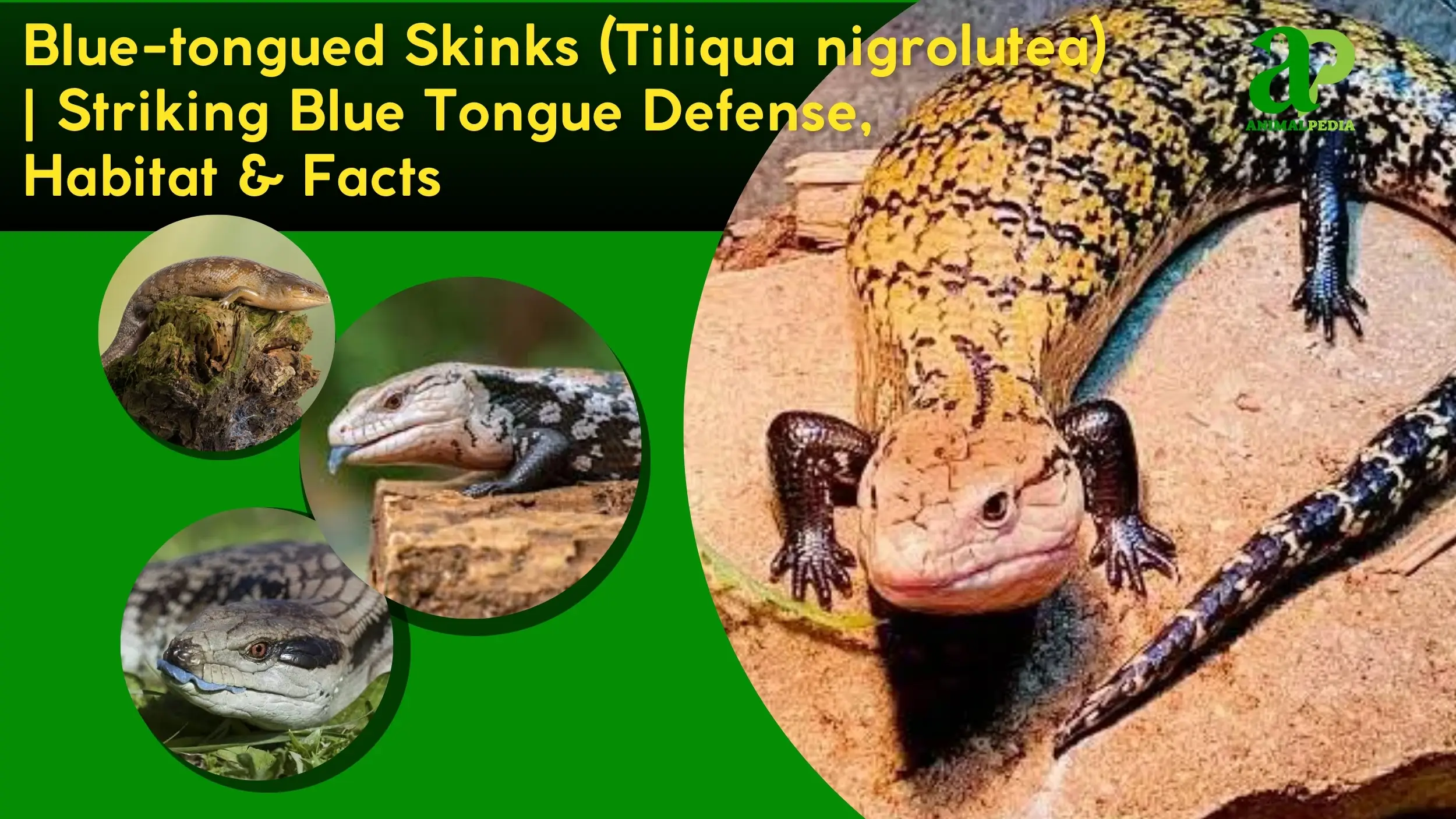
What Are Blue-tongued Skinks?
Blotched blue-tongued skinks are a species of large, heavy-bodied lizards native to the cool, temperate zones of southern Australia, identified by a unique defense mechanism involving a bright blue tongue. Scientifically, they belong to the kingdom Animalia, phylum Chordata, class Reptilia, order Squamata, and family Scincidae. This classification places them within the broad group of scaled reptiles, with their family including many other skink species worldwide. While officially known as Tiliqua nigrolutea, these skinks are also commonly referred to as the Southern blue-tongued lizard or Blotched blue-tongued lizard [2]. A 2023 review in Royal Society Open Science highlighted how Tiliqua species, including the Blotched blue-tongued skink, have adapted their omnivorous diet and reproductive viviparity to thrive in diverse habitats [5].
While the Blotched blue-tongued skink’s classification is well-established, there are ongoing debates within the scientific community regarding subspecies status. Some researchers propose that highland and lowland forms may represent distinct subspecies due to variations in their coloration and size, based on genetic divergence, while others consider these differences to be clinal variations without formal recognition [3]. Another area of discussion involves the primary purpose of their blue tongue. While a 2018 study in the Journal of Zoology suggests its role as a UV-based startle display against predators, other researchers question if it also has a function in communication among members of its own species, leading to conflicting interpretations of behavioral data [8]. After defining their scientific and common designations, we can now appreciate the distinct visual characteristics that make these creatures so captivating.
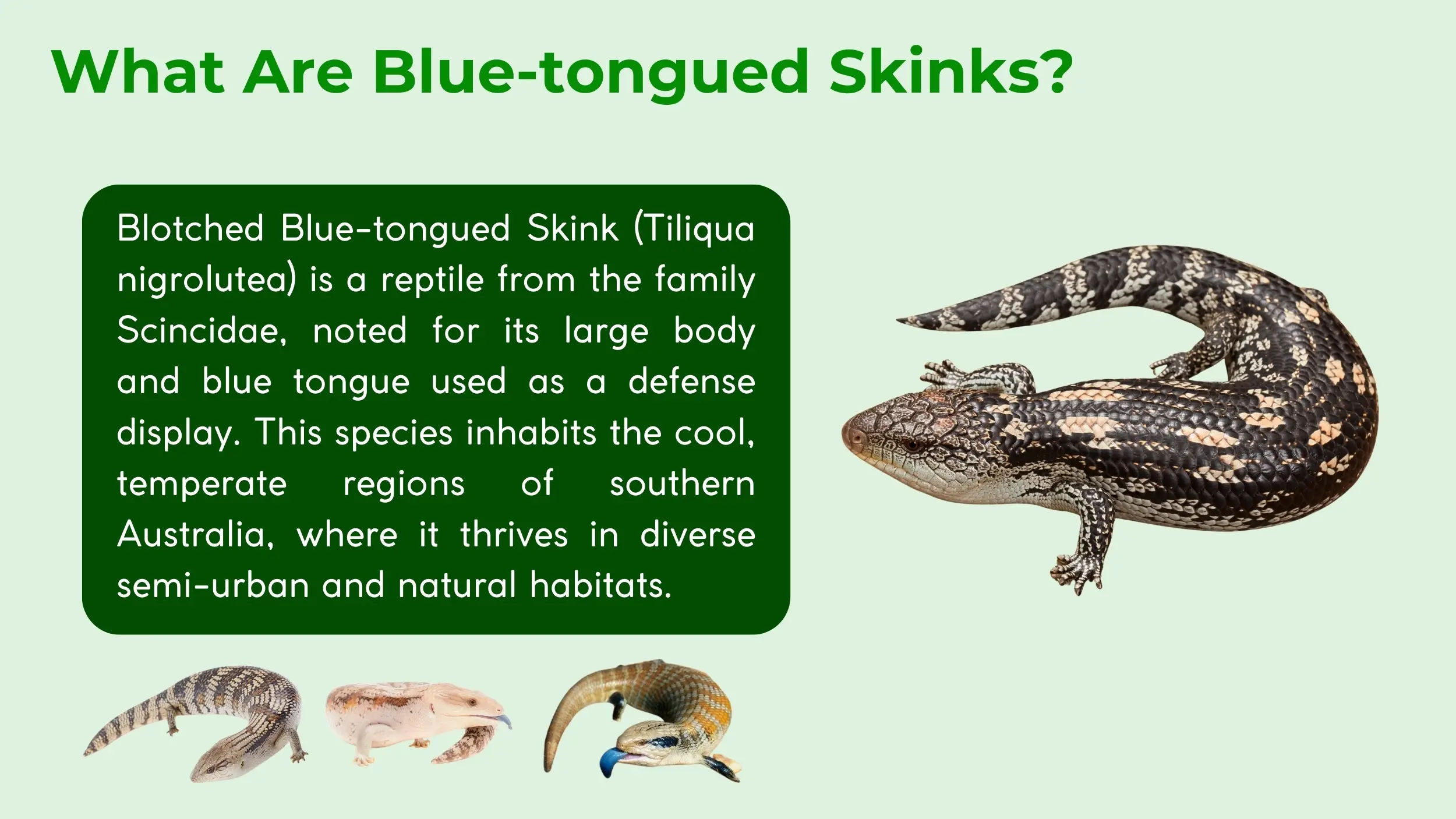
What Do Blue-tongued Skinks Look Like?
The Blotched blue-tongued skink presents a distinctive and robust appearance, characterized by a stout, cylindrical body and a large, triangular head, creating a squat profile suited for terrestrial life. Adults typically measure 18 inches (45 cm) and weigh 1.3 pounds (600 g). Their skin features smooth, overlapping, keeled scales, forming a protective, armored texture. Coloration ranges from dark brown to black, adorned with irregular yellow, cream, or pink blotches across the body and back, with highland forms displaying darker, more pronounced patterns [1]. This intricate scaling provides both camouflage and defense, aiding in water retention and thermoregulation within their diverse environments.
Blotched blue-tongued skinks possess five primary physical characteristics critical for survival and interaction with their environment. These include:
- Vibrant Blue Tongue: Its vibrant blue tongue is key to its defensive display, extended to startle predators, with UV enhancement likely aiding against avian threats [7, 8].
- Armored Scales: Armored, keeled scales provide a protective outer layer, minimizing water loss and defending against physical harm [1].
- Powerful Jaws: Powerful jaws, with 40-50 peg-like teeth and crushing molars, are adapted for grinding hard-shelled prey [1].
- Short, Sturdy Limbs: Short, sturdy limbs with five clawed toes enable slow terrestrial movement and efficient digging [1].
- Thick, Tapered Tail: A thick, tapered tail (4-6 inches / 10-15 cm) stores fat, aids balance, and can be autotomized, though regeneration is poor [1].
Sexual dimorphism is subtle, with males typically having proportionally larger heads and stockier bodies compared to the slightly longer and heavier females [1]. Females also exhibit slightly extended snout-vent lengths, generally between 10 to 12 inches (27-30 cm), compared to males, who are usually 10 to 11 inches (25-27 cm) [1]. These minor differences highlight the species’ reproductive strategies and morphological adaptations. With a clear picture of their unique appearance, we will now examine the specific dimensions that define their physical size.
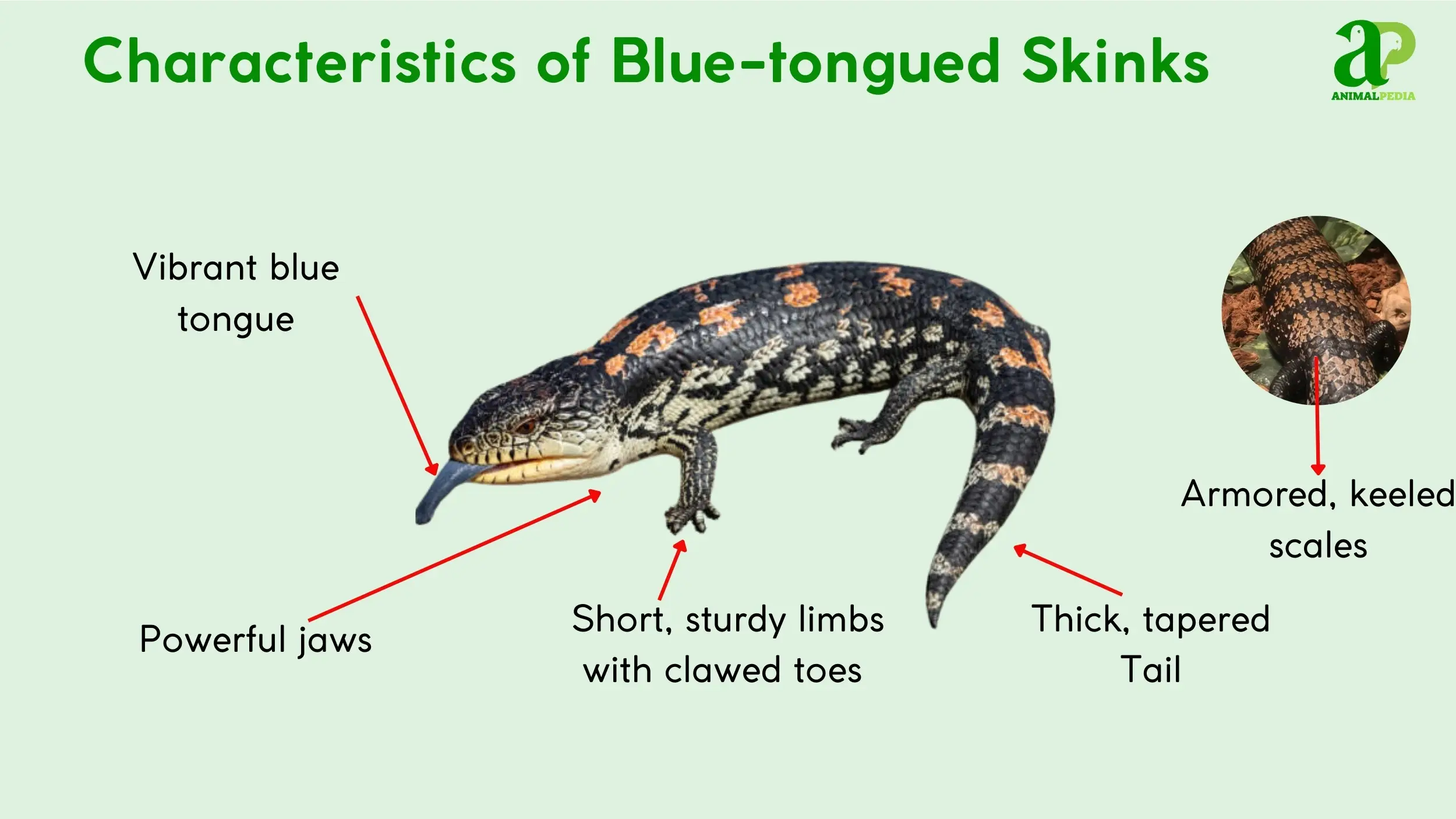
How Big Are Blue-tongued Skinks?
Adult Blotched blue-tongued skinks average 18 inches (45 cm) in total length and weigh 1.3 pounds (600 g). Newborns, 3 to 5 inches (8-12 cm) long and weighing 0.5 to 0.9 ounces (15-25 g), are independent from birth [1, 4]. Juveniles reach 10 to 14 inches (25-35 cm) by one to two years, achieving adult size and maturity around three to five years [1].
| Characteristic | Male | Female |
| Snout-Vent Length | 10-11 inches (25-27 cm) | 10-12 inches (27-30 cm) |
| Weight | 0.66-0.77 pounds (300-350 g) | 0.77-0.99 pounds (350-450 g) |
| Max Total Length | Up to 22 inches (55 cm) overall | Up to 22 inches (55 cm) overall |
An adult skink is approximately the length of a large house cat, yet more robust. Its thick body can be likened to a small football. Hatchlings are comparable to a large domestic mouse, demonstrating substantial growth from a vulnerable neonate to a formidable adult [1]. This size progression reveals key life history characteristics. Their specific physical dimensions are intrinsically linked to the environments they inhabit.
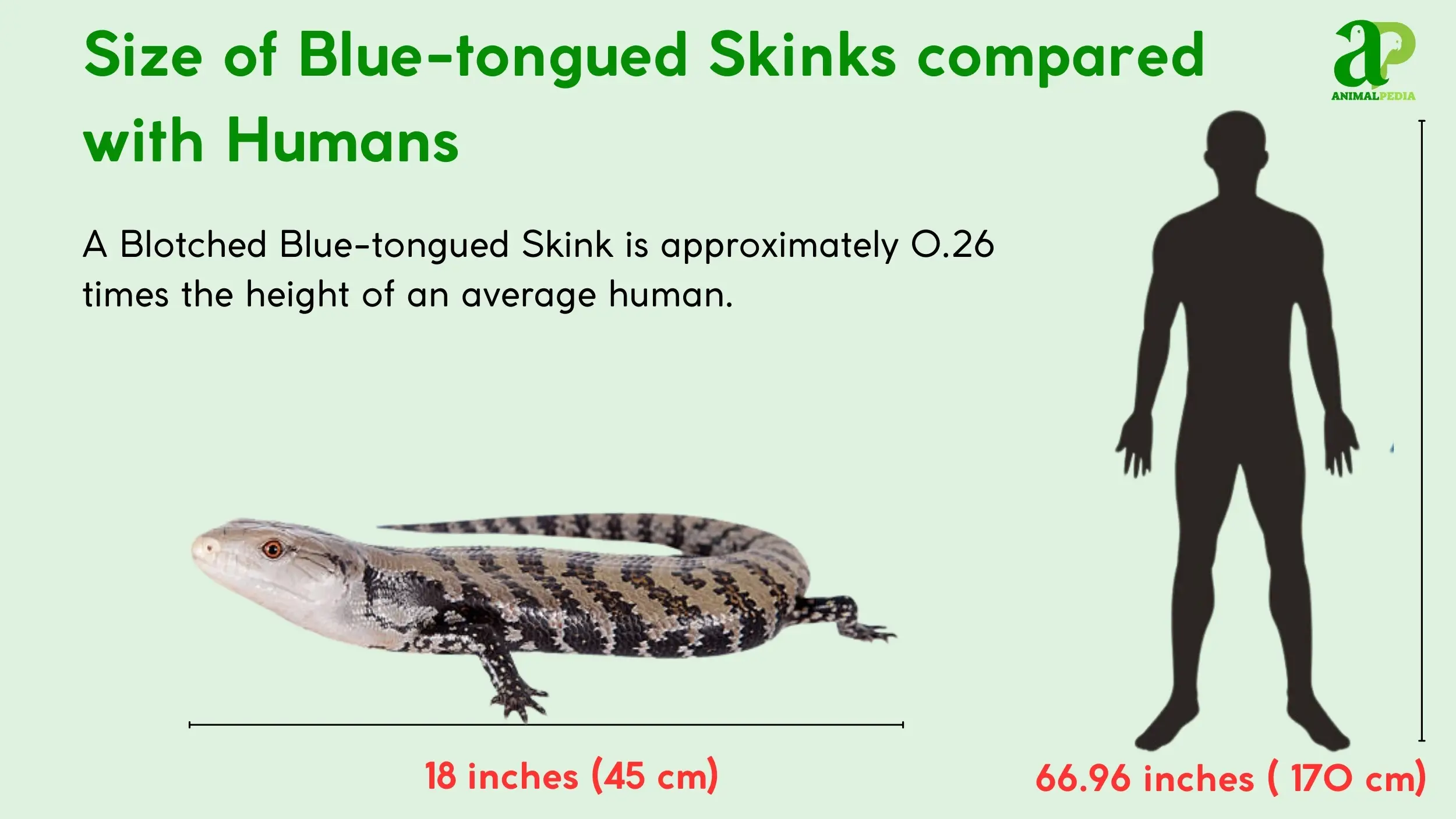
Where Do Blue-tongued Skinks Live?
The Blotched blue-tongued skink is native to southern Australia, spanning territories including Tasmania, Victoria, southern New South Wales, and parts of South Australia, along with islands in the Bass Strait. These versatile reptiles inhabit cool, temperate environments such as open woodlands, grasslands, shrublands, and sclerophyll forests, favoring areas with ample ground cover for shelter and foraging [1]. The elevation typically aligns with these terrestrial habitats, without specialized requirements for extreme altitudes or depths.
Their habitat necessitates a cool temperate climate, ideally within a temperature range of 50-86°F (10-30°C), with humidity levels between 40-60%. Crucially, they require basking sites that allow their body temperature to reach 86-95°F (30-35°C), and they undergo brumation during the colder winter months [1]. This species is primarily solitary, demonstrating mild territorial behavior, particularly during the mating season. They mark their space using scent from their cloaca, defending their immediate surroundings with displays rather than consistent aggression throughout the year [1]. Learning about their preferred habitats naturally leads us to explore their typical daily routines and interactions within these environments.
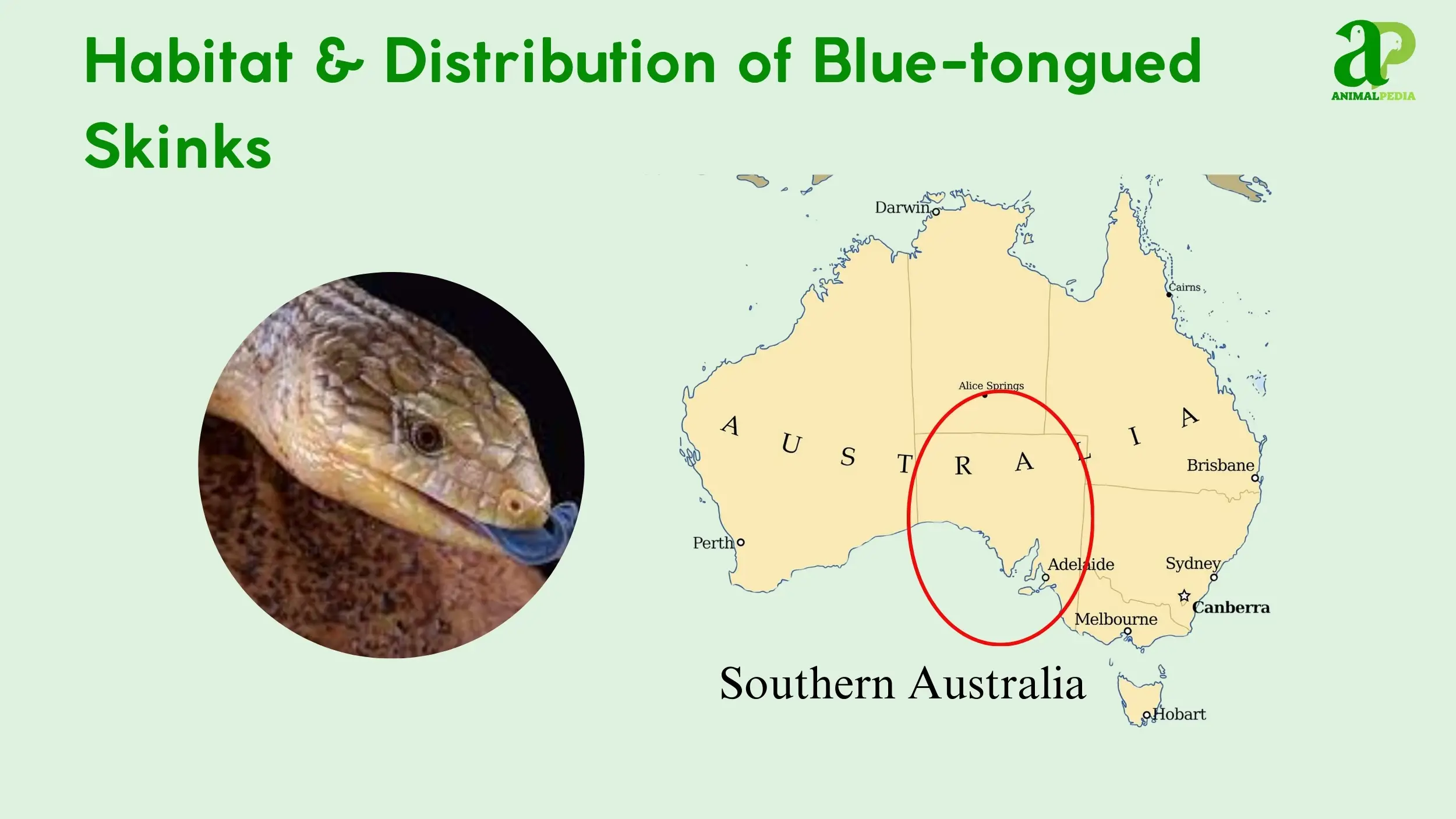
How Do Blue-tongued Skinks Behave?
Blotched blue-tongued skinks exhibit a range of behaviors centered on survival, from slow, deliberate foraging to a distinctive defensive display involving their blue tongue. Their daily routines involve basking and terrestrial movement, with seasonal shifts for reproduction and brumation.
- Diet and Feeding: As omnivores, they consume a varied diet of invertebrates and plant matter, primarily foraging slowly during the day.
- Movement and Abilities: They are terrestrial walkers, generally slow, but capable of short bursts of speed and adept at burrowing for shelter.
- Daily/Seasonal Patterns: These diurnal skinks are active during the day, with seasonal shifts including courtship in spring and brumation in winter.
This section delves into the specifics of their feeding strategies, locomotion, and daily and seasonal rhythms, illustrating the intricate ways these skinks interact with their environment. To truly appreciate their adaptive strategies, we must first understand their dietary habits.
Diet and Feeding
Blotched blue-tongued skinks are omnivores, eating a varied diet of invertebrates, small vertebrates, and plant matter. Their diet typically consists of 50% vegetables and greens, 40% proteins such as snails, insects, and small vertebrates, and 10% fruits, including berries and strawberries, reflecting their natural foraging habits [1]. They are opportunistic feeders, utilizing their strong jaws and crushing molars to process hard-shelled prey effectively [1].
These skinks forage slowly during the day, relying on ambush tactics or crushing slow-moving prey. They do not hunt in packs or use tools. Their feeding patterns align with their diurnal nature, as they are primarily active during daylight hours [1]. An adaptation includes their robust jaws, which allow them to efficiently crush tough food items, a crucial trait for their diet of snails and beetles [1]. This feeding strategy is well-suited to their temperate habitats, where such food sources are readily available. With knowledge of their diet, we can now consider if these creatures pose any potential dangers.
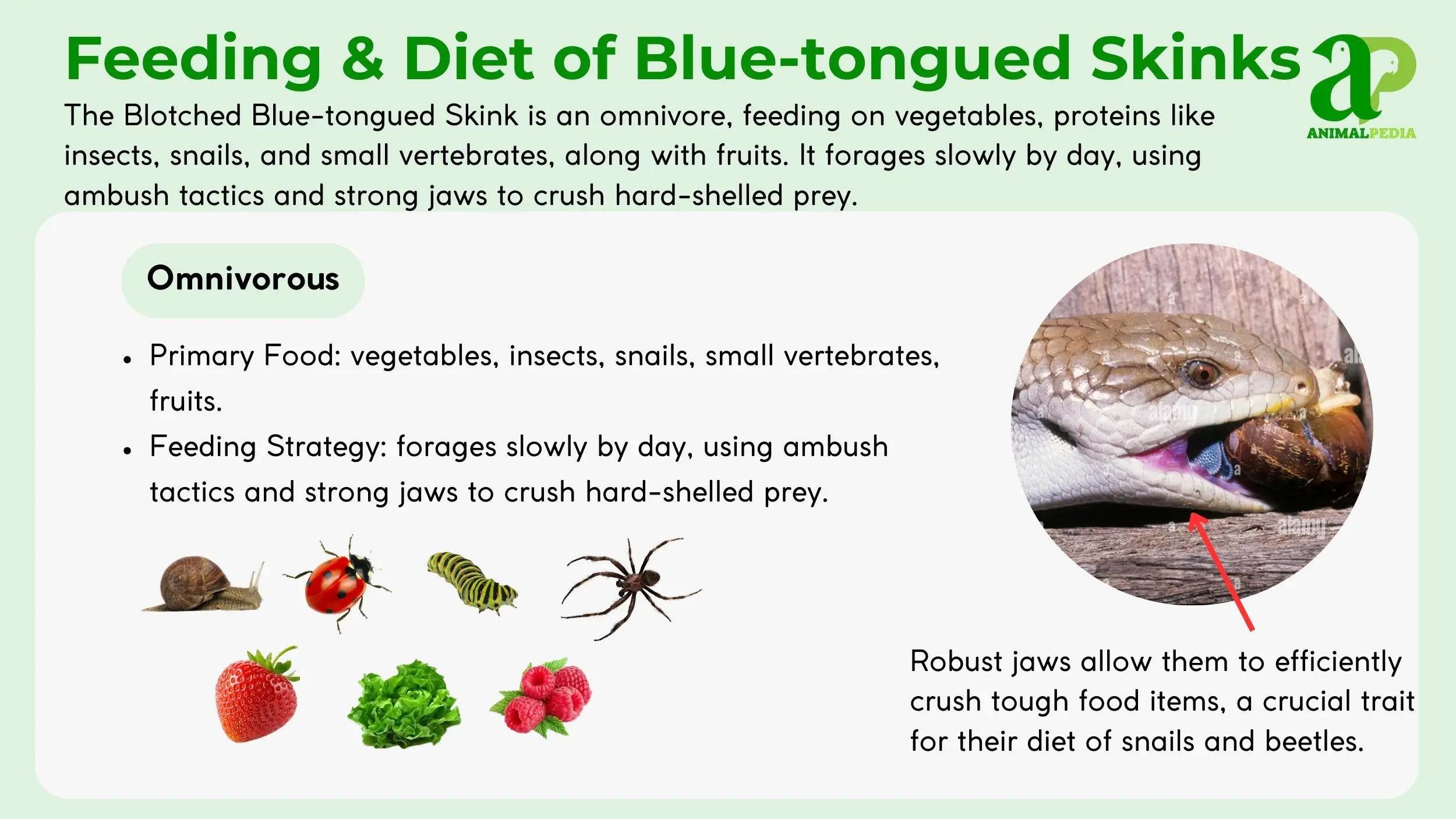
Are Blue-tongued Skinks Poisonous?
Blotched blue-tongued skinks are not venomous; they do not possess venom glands or deliver toxins through their bites. This is a common misconception, as their defensive blue tongue display often leads people to believe they might be dangerous. Scientific studies consistently confirm their non-venomous status, focusing instead on their deimatic displays for predator deterrence [1, 8].
While not venomous, a bite from a blue-tongued skink can cause pain, bruising, and minor lacerations due to their strong jaws and peg-like teeth [1]. There is no specific venom or infection risk beyond what is associated with any typical wound, requiring standard first aid. If bitten, clean the wound with soap and water or a mild disinfectant, apply pressure to stop any bleeding, and monitor for signs of swelling or infection. Medical attention is advisable if the wound is deep or signs of infection appear [1]. Their primary defensive behaviors against humans involve bluffing with their blue tongue, hissing, and body flattening to appear larger, reserving biting for direct threats [1]. With clarity on their safety, we can now appreciate their physical prowess and the ways they navigate their environment.
Movement and Abilities
Blotched blue-tongued skinks move with a terrestrial walking gait, characterized by a slow, deliberate pace. While primarily ground-dwellers, they can also perform limited climbing on low vegetation. They are not arboreal, meaning they do not live in trees, nor are they aquatic, as they do not spend time in water [1]. Their movements are well-adapted for navigating leaf litter and dense undergrowth in their temperate habitats.
- Terrestrial Walking: Their short, sturdy limbs and five-toed feet with small claws are ideal for slow, steady movement across various substrates and for digging burrows [1].
- Basking: A significant part of their daily activity involves basking in sunlight to regulate their body temperature, a crucial behavior for ectothermic reptiles [1].
- Burrowing: They possess an ability to burrow, creating shelters in soft soil or beneath debris to escape predators and regulate temperature during extreme weather [1].
The Blotched blue-tongued skink can run at speeds up to 1.1 miles per hour (0.5 m/s) over short distances, typically 30-60 feet (10-20 m), which is sufficient for escaping immediate threats but not for prolonged pursuit [1]. Their physical capabilities include a flexible skull that allows them to squeeze through gaps as small as 0.8 inches (2 cm), aiding in finding shelter and evading predators [1]. This demonstrates an adaptation for navigating tight spaces within their habitat. These physical capabilities are intrinsically woven into their daily and seasonal routines.
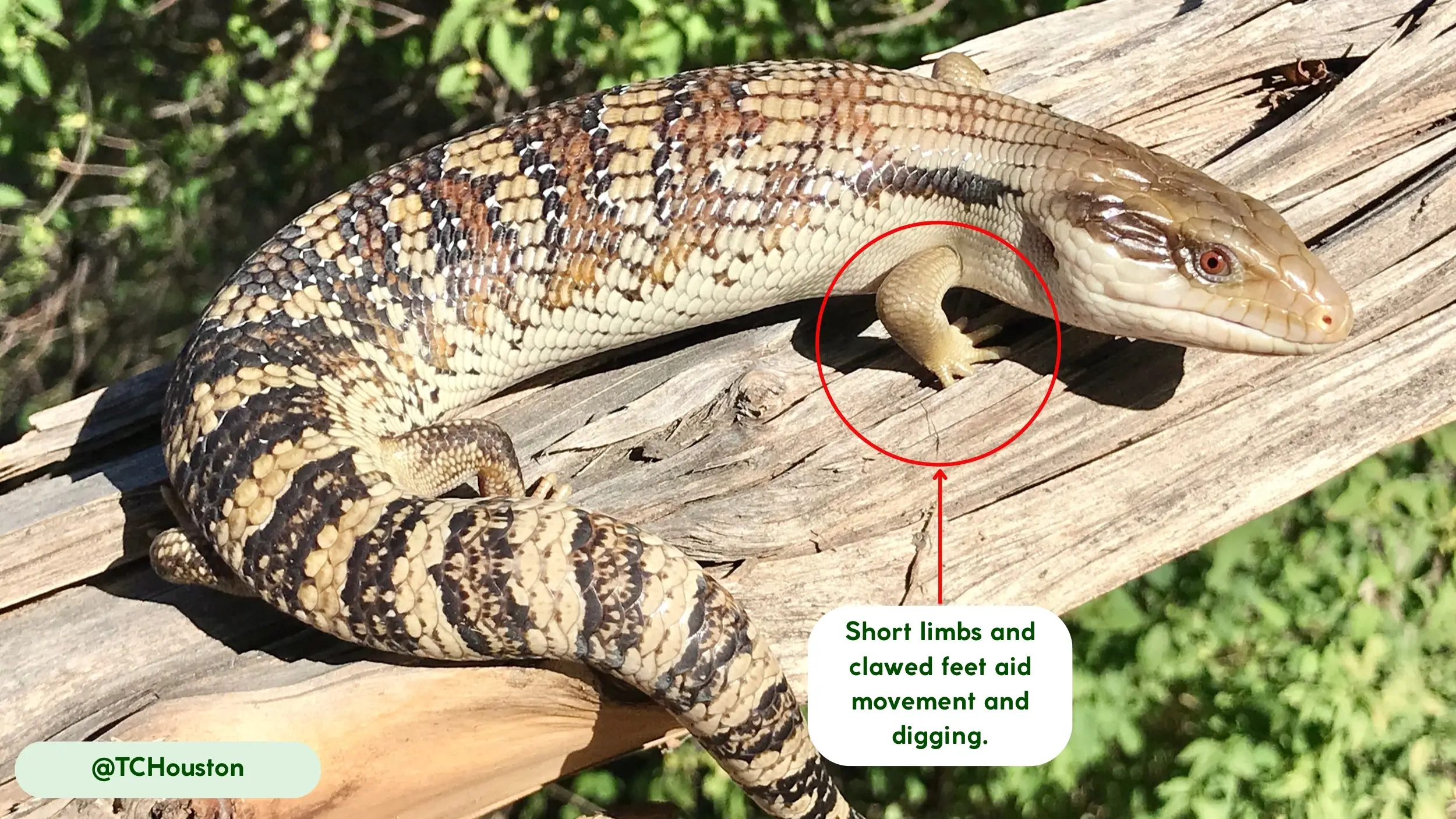
Daily/Seasonal Patterns
Blotched blue-tongued skinks are diurnal, meaning they are active during daylight hours, typically beginning their activity as temperatures rise and concluding as evening approaches. Their daily activity cycle is primarily focused on foraging, basking, and seeking shelter.
- Morning (approx. 7:00 AM – 10:00 AM): Emerge from overnight shelters to bask in sunny spots, raising their body temperature to an optimal range of 86-95°F (30-35°C) [1].
- Mid-day (approx. 10:00 AM – 4:00 PM): Actively forage for food, moving slowly through leaf litter and vegetation, and engaging in sensory exploration with their tongue [1].
- Late Afternoon/Evening (approx. 4:00 PM – 7:00 PM): Seek out shelters, such as burrows or under logs, to rest and avoid nocturnal predators as temperatures drop [1].
These skinks exhibit clear seasonal patterns, becoming more active during the spring and summer months (September to March in the Southern Hemisphere). This period aligns with warmer temperatures and increased food availability, which support heightened foraging, reproductive activities, and overall energy expenditure [1]. Conversely, during the colder winter months (May to August), they undergo brumation, a state of inactivity similar to hibernation, often burrowing deeper to survive sub-zero temperatures, particularly in highland forms [1]. These skinks are largely sedentary, with no known extensive migration patterns; they typically remain within a defined home range, with localized movements primarily driven by food availability and mating [1]. Their distinct seasonal cycles naturally lead us to examine their intricate reproductive behaviors.
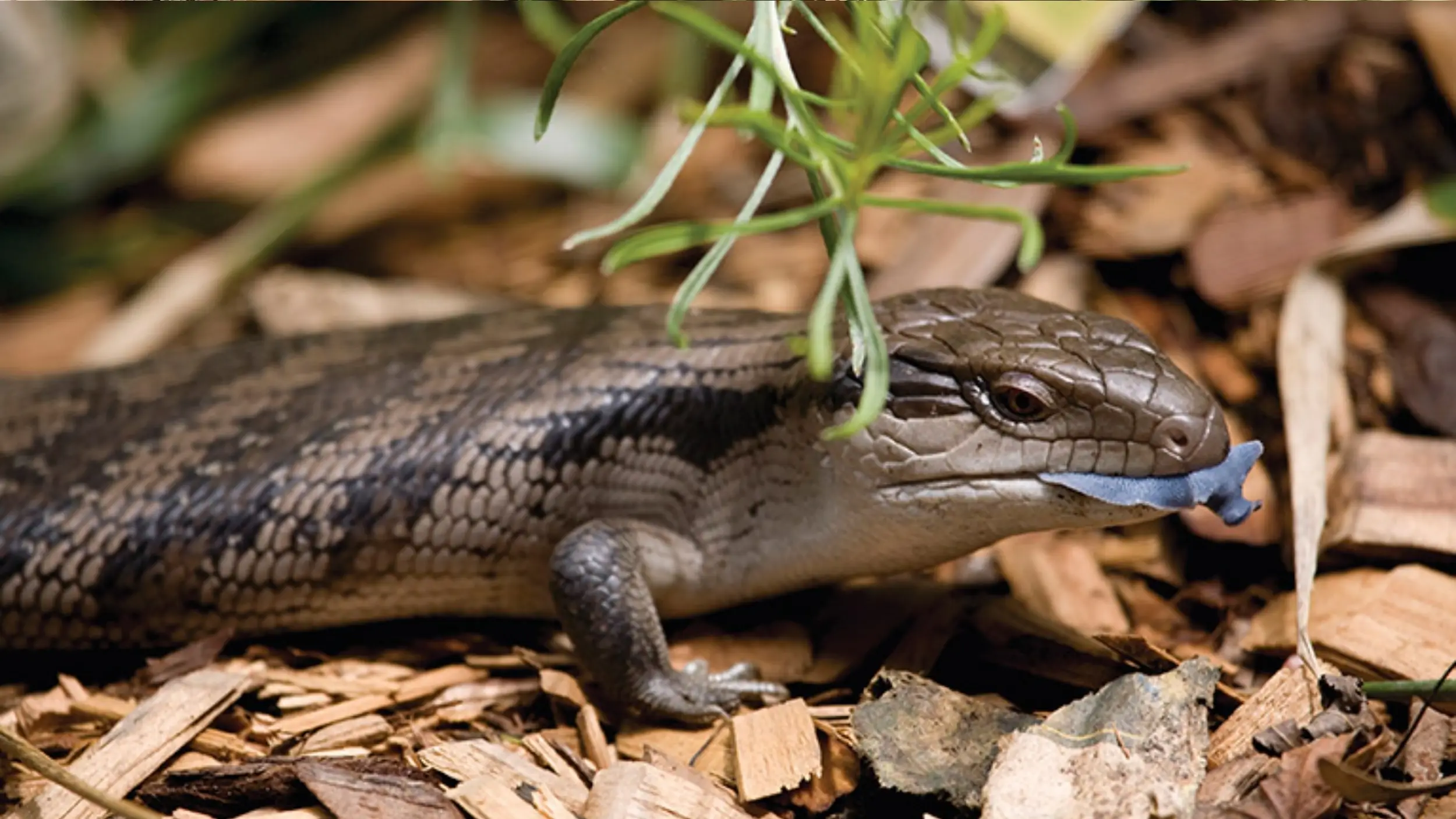
How Do Blue-tongued Skinks Reproduce?
Blotched blue-tongued skinks are viviparous, meaning they give birth to live young after internal development, rather than laying eggs. Mating typically occurs in the spring months, from September to November in their Southern Hemisphere range [1, 6]. During this season, males become more active and engage in courtship behaviors that can appear aggressive, including pursuing females, fighting rival males, and rough copulation which may involve biting the female [1]. Territorial displays, such as head-bobbing, are also common among males to establish dominance [1].
Following successful mating, the gestation period lasts approximately three to five months, with births occurring between November and April [1]. Females provide nourishment to their embryos through placentas, and the newborns are fully formed and immediately independent upon birth, shedding their skin within days [1, 4]. A typical litter size ranges from 5 to 11 young, with highland forms generally having smaller litters (around 5) compared to lowland forms (around 11) [1]. There is no parental care beyond birth; the young disperse immediately to begin their solitary lives [1]. Seasonal breeding patterns are directly influenced by environmental triggers, with warmer spring temperatures initiating the reproductive cycle. Their successful reproduction is a key factor in how long these fascinating creatures persist.
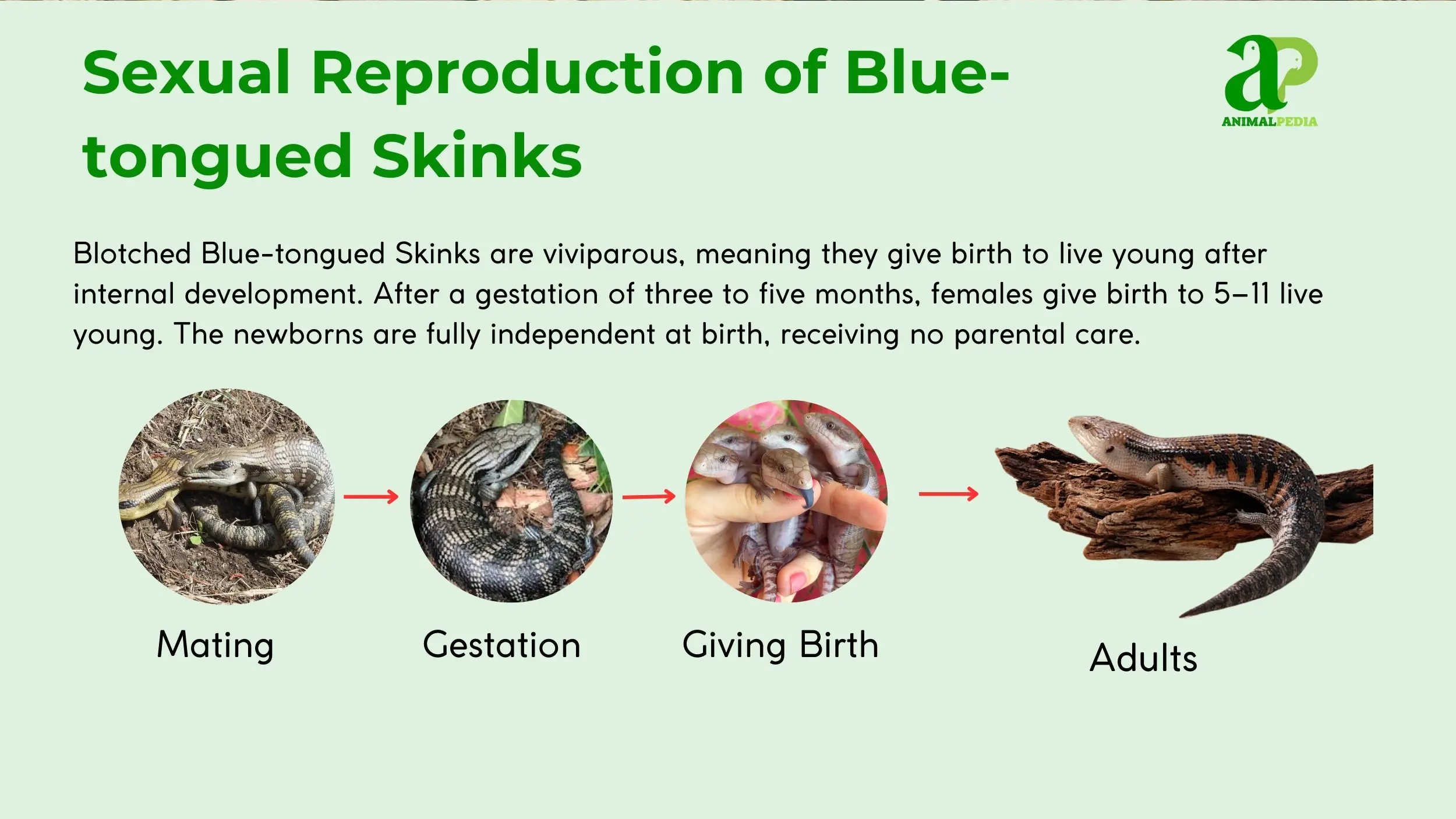
How Long Do Blue-tongued Skinks Live?
Blotched blue-tongued skinks live approximately 15 to 20 years on average in the wild, with some individuals reaching up to 25 years [1, 2]. In captivity, their lifespan can extend further, often averaging 20 years and potentially exceeding 30 years under optimal care and conditions [1, 7].
These skinks reach sexual maturity between three to five years of age, at which point they attain their full adult size and become capable of reproduction [1]. Several factors influence their longevity. A balanced omnivorous diet is crucial for preventing malnutrition, while stable habitats protect them from environmental stressors [1, 10]. Predation by large birds, snakes, and introduced mammals significantly reduces wild lifespans, and diseases, such as parasites like ticks and nematodes, or poisoning from insecticides, can also impact their health and survival [1, 2, 7, 10]. Beyond their extended lifespans, their interactions with humans are a significant aspect of their ecological story.
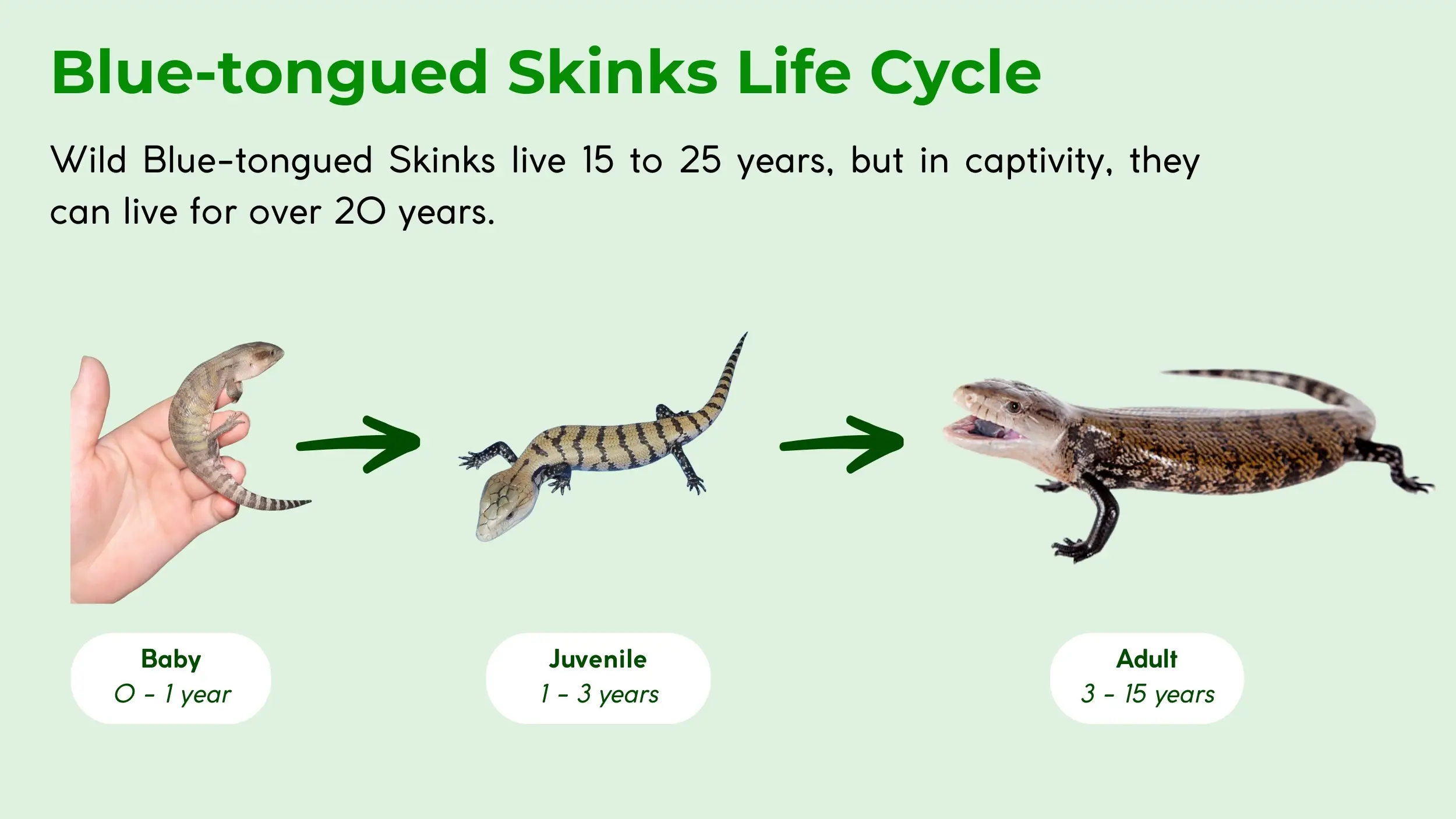
Are Blue-tongued Skinks Beneficial to Humans?
Blotched blue-tongued skinks are beneficial to humans, primarily through their ecological roles and cultural significance, without posing significant harm. These reptiles naturally assist in pest control by consuming various invertebrate garden pests, such as snails and slugs [1]. This predation helps maintain balanced ecosystems and can reduce the need for chemical pest control in agricultural and garden settings. Beyond their pest control contributions, their docile temperament makes them popular and recommended pets for beginners, providing companionship and educational opportunities for reptile enthusiasts [1, 7].
In terms of cultural significance, Blotched blue-tongued skinks appear in Australian Indigenous folklore as symbols of resilience and adaptation, reflecting their long-standing presence and importance in native ecosystems [1]. They are also featured in literature and media, serving as representations of Australian native wildlife. Furthermore, these skinks contribute to ecotourism in Australia, attracting wildlife enthusiasts and supporting local economies [1]. While they are involved in the pet trade, there are no major commercial uses for food or medicine. To fully assess their place in the natural world, we must also examine their conservation status and the challenges they face.
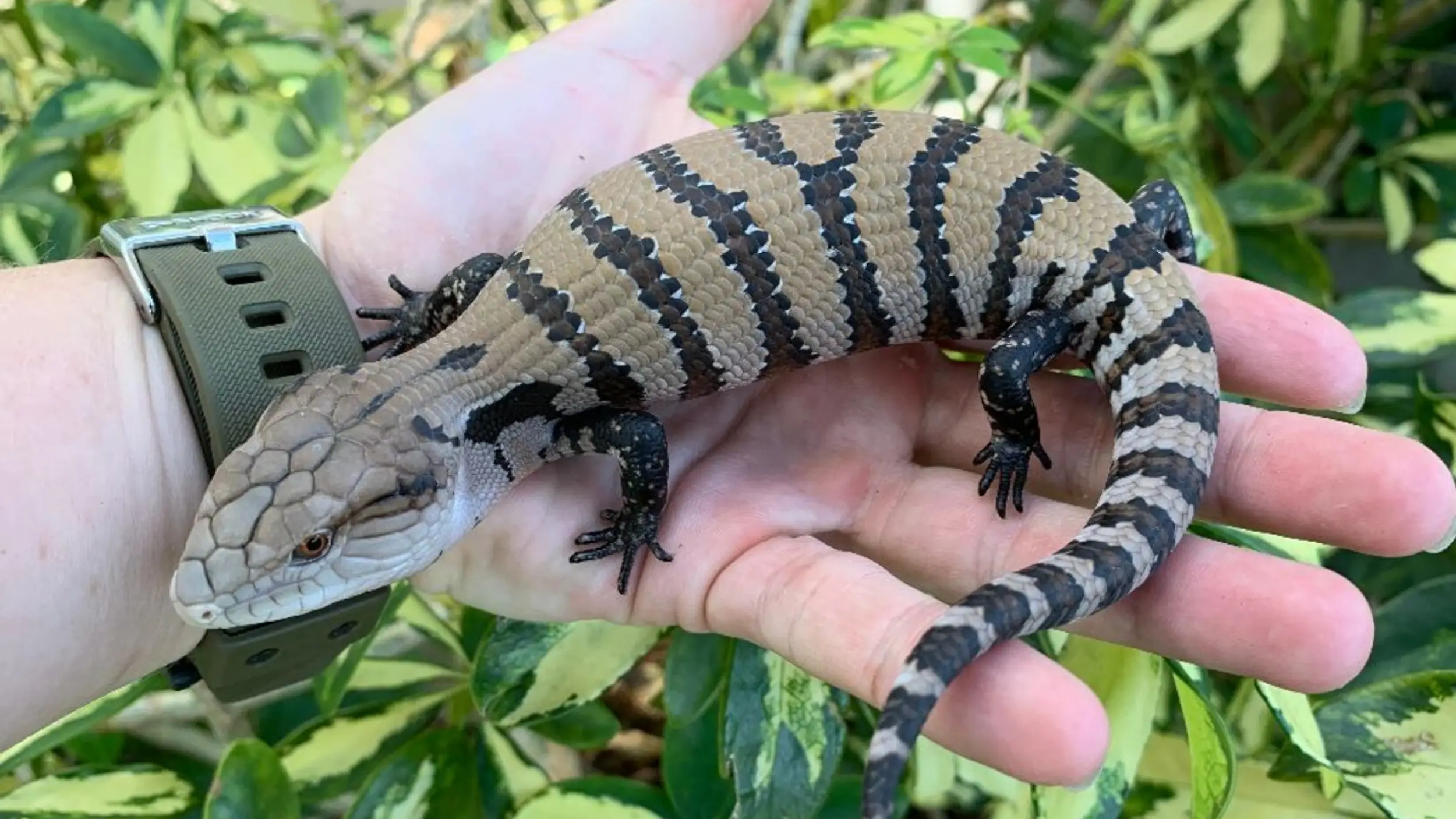
Are Blue-tongued Skinks Endangered?
Blotched blue-tongued skinks are not endangered; their current conservation status is Least Concern according to the IUCN Red List, last assessed in 2018 with no changes as of 2025 [2]. This classification indicates that the species has a widespread distribution and a stable population, not facing immediate threats to its survival. However, several factors still pose challenges to their well-being within their natural habitats, necessitating ongoing monitoring and local conservation efforts.
The primary threats to Blotched blue-tongued skinks include pesticide poisoning, habitat fragmentation due to urbanization, road mortality from vehicle strikes, and predation by introduced species such as feral cats, dogs, and foxes [1, 2, 10]. To support their survival, various conservation actions are in place. They are protected within national parks and reserves, particularly in Tasmania, and public education campaigns aim to raise awareness about avoiding baits and reducing road fatalities [1, 2]. Citizen science initiatives, like iNaturalist, monitor populations, helping researchers track distribution and health [6]. No formal breeding programs are currently needed due to their stable population status [1, 2]. Having explored their conservation, we can now uncover some truly unique facts that highlight their distinct characteristics.
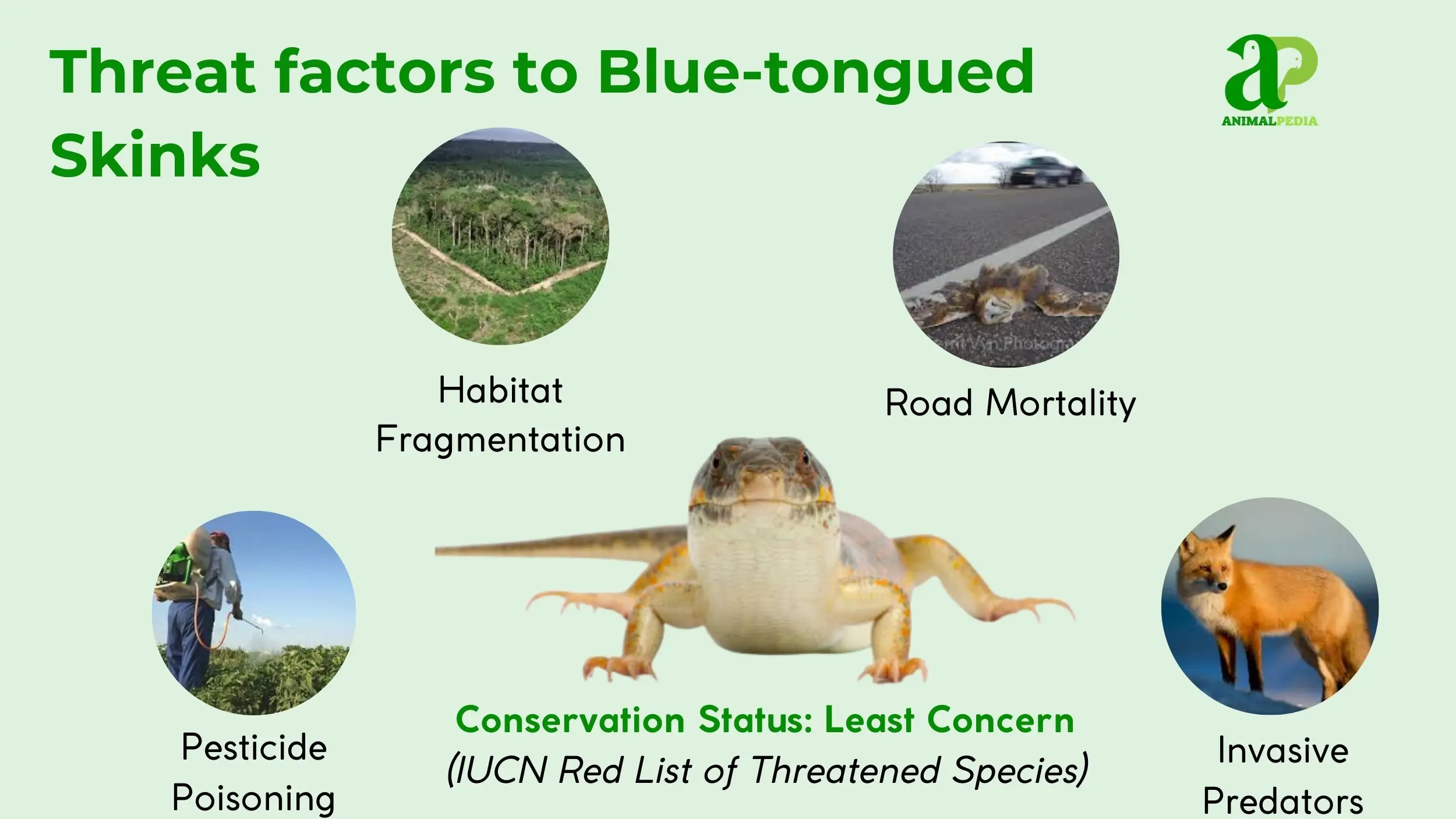
Frequently Asked Questions About Blue-tongued Skinks
Do Blue Tongued Skinks Make Good Pets?
Yes, blue-tongued skinks make good pets, particularly for beginners, due to their docile temperament and hardy nature. They are relatively easy to care for, responding well to consistent handling and captive environments [1, 7].
How Are Blue-Tongued Skinks Similar To Mammals?
Blue-tongued skinks are similar to mammals in their viviparous reproduction, giving birth to live young rather than laying eggs. This shared trait, while convergent, provides a unique biological link, as most reptiles are oviparous [1].
How Fast Can A Blue Tongued Skink Run?
A blue-tongued skink can run at speeds up to 1.1 miles per hour (0.5 m/s) over short bursts. They are not built for speed but utilize this agility for quick escapes over distances of 30-60 feet (10-20 m) [1].
What Animal Did Blue Tongued Skinks Evolve From?
Blue-tongued skinks evolved from earlier lizard ancestors within the family Scincidae, belonging to the genus Tiliqua. Their evolutionary bursts in size highlight a distinct lineage within this diverse group of reptiles [3, 9].
What Food Is Bad For Blue Tongued Skinks?
Foods high in oxalates, phosphorus without balanced calcium, or those with artificial additives are bad for blue-tongued skinks. Examples include excessive spinach, avocado, or processed human foods, which can cause nutritional imbalances [1].
Conclusion
The Blotched blue-tongued skink, Tiliqua nigrolutea, stands as a testament to nature’s diverse adaptations, from its striking blue tongue defense to its notable cold tolerance. This robust reptile, a cornerstone of southern Australian ecosystems, offers profound insights into behavior, ecology, and evolutionary science. Its gentle nature also underscores its appeal in human interactions, further enriching our appreciation for the animal kingdom.
Animal Pedia is dedicated to providing comprehensive, scientifically accurate knowledge about Earth’s fauna. We encourage you to delve deeper into our extensive resources and discover more about the incredible creatures that share our planet. Explore Animal Pedia to expand your zoological insights and join us in celebrating the wonder of wildlife.
